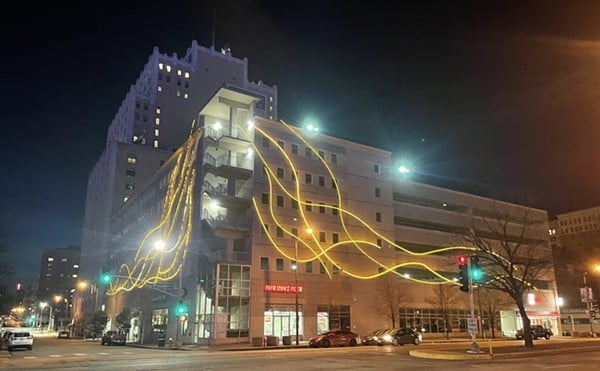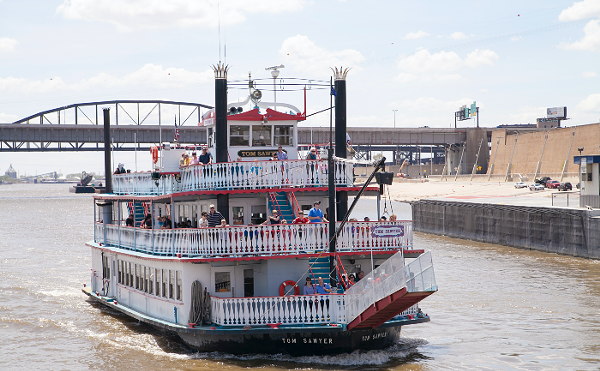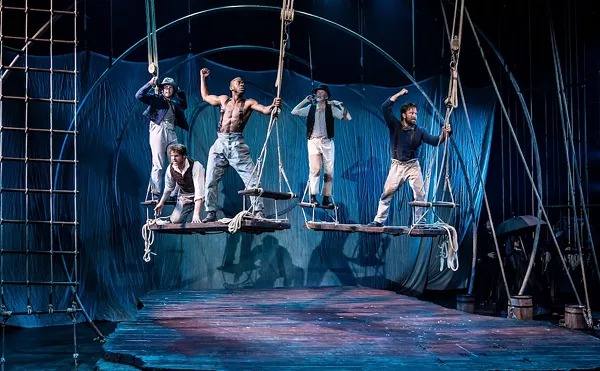No station previously had unfolded a set of solar arrays so huge in area and so shocking when they caught the sunlight head-on. The glorious silver wings, turning together, flashed blinding white when the sun struck them just so.
This place, the International Space Station, was a marvel of size, of funding and of cooperation. It was the product of the efforts of 16 nations working together for 50 space missions over the course of eight years. Living and working in space was now routine, the human frontier was expanding, and our search for extraterrestrial intelligence was proceeding with renewed intensity. Planet Earth had finally gotten its shit together.
This is a picture of life in 2006, when, if all goes as planned (and that's a big if), the International Space Station will be completed and functioning. The $60 billion collaborative effort that was not going to happen while the Cold War slogged on is now in full swing. The Russian Zvezda and Zarya modules have linked, a Russian Progress unmanned space freighter has joined them, and the core and living quarters of what will be a 356-by-143-by-290-foot orbiting station are waiting to be joined by a lot more materials and a working crew of four to seven astronauts. On Sept. 8, the U.S. space shuttle Atlantis will dock with the assemblage of modules and begin to unpack supplies and integrate computer systems.
Nothing like this has ever been done. America's Skylab, allowed to burn up in the atmosphere in 1979, "required one launch to set up the station," according to Space.com staff writer Anatoly Zak, "and three rockets to deliver three additional crews, so it was four launches. So it's almost incomparable with this project, which requires dozens of launches."
The ISS also requires a breathtaking level of cooperation and scheduling among 16 nations, including Japan, Brazil, Canada, France, the United States and Russia. They must collaborate to share the brain power, raise the money and provide the equipment to make the station happen. This will require years of ongoing political goodwill and serious funding from a diversity of governments. Arguably, ISS couldn't happen without this advanced degree of international burden-sharing. It's kind of like the hippie dream of Arthur C. Clarke's book 2010 -- if we can get together and start acting like mensches down here, the universe up there will start to reveal her big secrets.
St. Louisans can get insight into ISS by heading to the St. Louis Science Center to take in the Star Station One (the project was formerly called by this name) Amazing Science Demonstration programs offered daily. Two 15-minute shows co-sponsored by Boeing and NASA are geared to an audience of kids and go over some basic space-travel concepts, such as how spacesuits are cooled and the spinal elongation induced by extended stays in space. The only part of the shows germane to ISS was a moment at the very beginning, when the young demonstrator pointed out a vitrine containing an excellent model of ISS, and shortly after, when he screwed together two different, very crude gray plastic models of space modules to illustrate the Zvezda-Zarya hookup.
In honesty, the presentation was not the greatest. Some of the miniexperiments came off weakly, and Brian the demonstrator kept up an attitude that was flip and languid, as if he'd done this hundreds of times and would rather have been somewhere else. The highlight came when he poured about half a gallon of liquid nitrogen onto the carpeted floor, where it instantly vaporized into a creeping cloud of white gas. This was not actually part of the show -- someone just asked him a question about a tank of the stuff sitting behind him, and he obliged.
The 1-to-144-scale model of ISS in the nearby display case is awfully cool. Most of the children visiting the Center are too busy sprinting through the place to notice it, but it catches the eye of some of the adults. (In a scene from the recently released movie Space Cowboys, the same model can be spotted in the office of the NASA administrator played by James Cromwell.) It shows off the eight main solar arrays and the bunches of smaller ones that surround them, as well as the main fuselage, which will be about as long as two passenger jets placed end to end. The model is decorated with tiny "bumper stickers" bearing the logos of the various national space agencies committed to the project.
Zak is employed by Space.com, a deep, privately held site dedicated to all things space. In addition to news about the latest NASA research and mission progress, the site is loaded with info presented in the coolest way there is -- cartoons. Flash animation of the ISS construction, ISS flying over Earth's horizon, the Mars Sojourner landing and scores of other representations have been rendered with maximum drama. The site also features trailers from sci-fi movies and info on TV shows like The X-Files and Farscape. Even noted sci-fi authors like Greg Benford, Gentry Lee, Larry Niven and Kim Stanley Robinson are all regular contributors of columns.
The folks at Space.com know that interest in sci-fi culture can only add to public support for space exploration. People want the future as depicted by Star Trek to become real, and ISS is a big step along that path. Are starships with warp drive too much to ask? Don't forget, it was novelist Clarke himself who first dreamed up the idea of the communications satellite. Life has reflected art more than once, and ISS will be the completion of a sci-fi fantasy and a reflection not just of art but of the sun. You see, Zak explains, ISS will eventually be visible as "the brightest star in the night sky."





